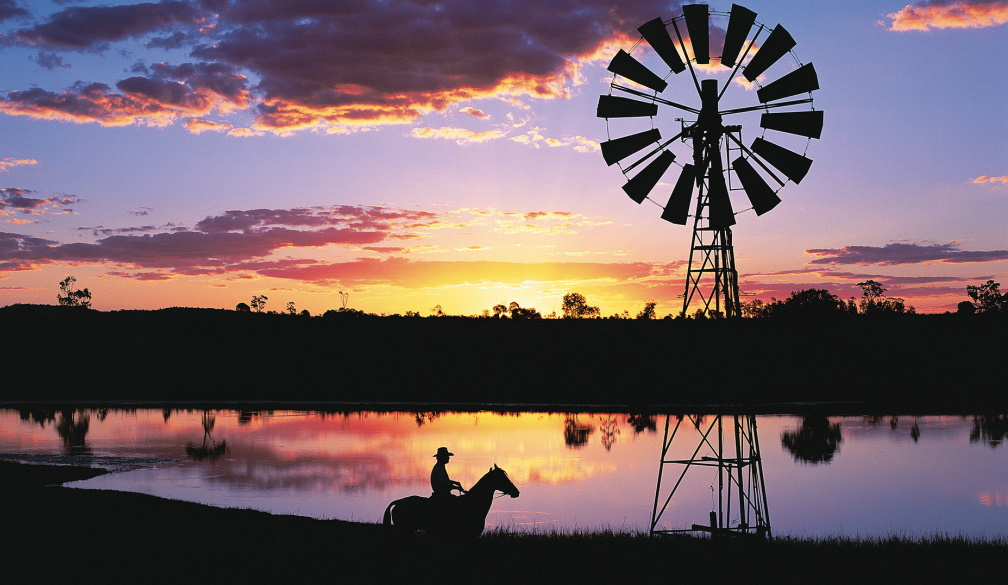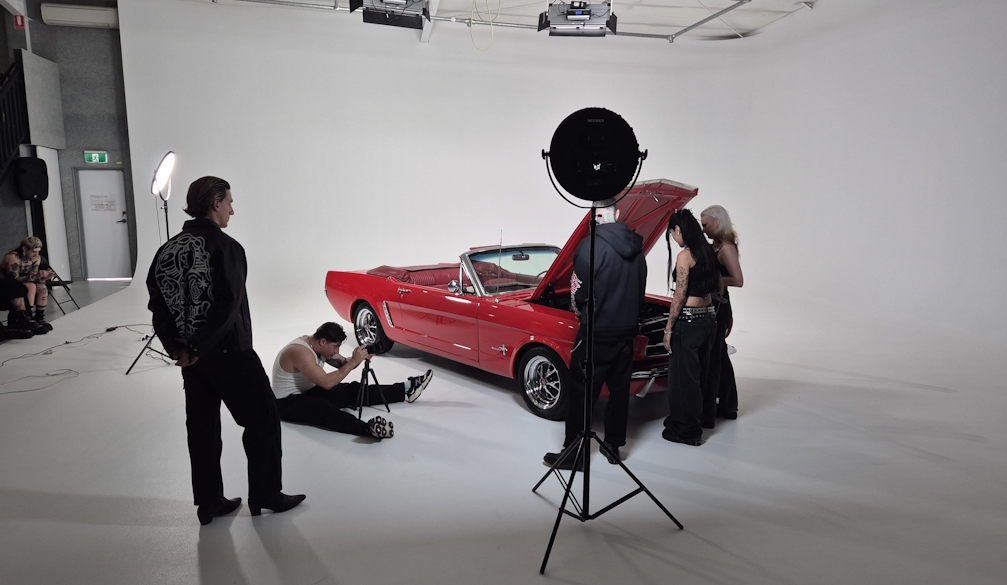the environment-versus-climate battle dividing regional Australia
- Written by Peter Burnett, Honorary Associate Professor, ANU College of Law, Australian National University

In August, Victoria’s Planning Minister Sonya Kilkenny made a decision[2] that could set a difficult precedent for Australia’s effort to get to net-zero emissions by 2050.
In considering the environmental effects of the proposed $1 billion Willatook wind farm[3] 20km north of Port Fairy in southwest Victoria, the minister ruled that the developers, Wind Prospect[4], had to build wider buffers around the wind turbines and observe a five-month ban on work at the site over each of the two years of construction.
Her reason? To protect the wetlands and breeding season of the brolga[5], a native crane and a threatened species, and the habitat of the critically endangered southern bent-wing bat[6].
Read more: The original and still the best: why it's time to renew Australia's renewable energy policy[8]The decision shocked many clean energy developers. Wind Prospect’s managing director Ben Purcell said the conditions imposed by the minister would reduce the planned number of 59 turbines by two-thirds[9] and make the project “totally unworkable[10]”.
Kilkenny acknowledged that her assessment[11] might reduce the project’s energy output. However, she said “while the transition to renewable energy generation is an important policy and legislative priority for Victoria”, so was “protection of declining biodiversity values”.
The military uses the term “blue on blue” for casualties from friendly fire. In the environmental arena we now risk “green on green” losses, and agonising dilemmas[12] as governments try to reconcile their responses to the world’s two biggest environmental problems: climate change and biodiversity loss.
Read more: The human factor: why Australia's net zero transition risks failing unless it is fair[13]
The green vs green dilemma
The goal of achieving net zero by 2050 requires nothing less than an economic and social transformation. That includes extensive construction of wind and solar farms, transmission lines, pumped hydro, critical mineral mines and more.
Australia needs to move fast – the Australian Energy Market Operator says 10,000km of high-voltage transmission lines[14] need to be built to support the clean energy transition – but we are already lagging badly[15].
The problem is that moving fast inflames what is often fierce opposition from local communities. They are especially concerned with the environmental impacts of vast electricity towers and lines running across land they love.
In southern New South Wales, organised groups are fighting to stop[17] the construction of a huge infrastructure project, HumeLink[18], that seeks to build 360km of transmission lines to connect Snowy Hydro 2.0[19] and other renewable energy projects to the electricity grid.Locals say the cities will get the power, while they pay the price. “No one should minimise the consequences of ‘industrialising’ Australia’s iconic locations – would we build power lines above Bondi Beach?” the Snowy Valleys Council asked[20] in a submission to a parliamentary inquiry.
Read more: Why Australia urgently needs a climate plan and a Net Zero National Cabinet Committee to implement it[21]
Clean energy developers are caught in a perfect storm, at loggerheads with environmentalists and landholders alike[22] over environmental conditions, proper consultation and compensation, while grappling with long regulatory delays and supply chain blockages for their materials.
They see a system that provides environmental approval on paper but seemingly unworkable conditions and intolerable delays in practice. Does the bureaucracy’s left hand, they wonder, know what its right hand is doing?
Net zero, nature protection and “rollout rage[23]” feel like a toxic mix. Yet we have to find a quick way to deliver the clean energy projects we urgently need.
What is to be done?
The major solution to climate change is to electrify everything, using 100% renewable energy. That means lots of climate-friendly infrastructure.
The major regulatory solution to ongoing biodiversity loss is to stop running down species and ecosystems so deeply that they cannot recover. Among other things, that means protecting sensitive areas, which are sometimes the same areas that need to be cleared, or at least impinged upon, to build new infrastructure.
Read more: Made in America: how Biden's climate package is fuelling the global drive to net zero[24]
To get agreement, we need a better way than the standard project-based approval processes and private negotiations between developers and landowners. The underlying principle must be that all citizens, not just directly affected groups, bear the burden of advancing the common good.
As tough as these problems look, elements of a potential solution, at least in outline, are on the table.
These elements are: good environmental information, regional environmental planning and meaningful public participation. The government’s Nature Positive Plan[25] for stronger environmental laws promises all three.
The Albanese government’s planAustralia lags badly in gathering and assembling essential environmental information. Without it, we are flying blind. The government has established Environment Information Australia[27] “to provide an authoritative source of high-quality environmental information.” Although extremely belated, it’s a start.
The Nature Positive Plan may also improve the second element – regional planning – by helping it deal with “green on green” disputes through its proposed “traffic light” system[28] of environmental values.
Places with the highest environmental values (or significant Indigenous and other heritage values) would be placed in “red zones” and be protected from development, climate-friendly or not.
Development would be planned in orange and green zones, but require biodiversity offsets[29] in orange zones.
Read more: Too hard basket: why climate change is defeating our political system[30]
The catch is that most current biodiversity offsets, which commonly involve putting land into reserve to compensate for land cleared, are environmental failures.
The government has promised to tighten these rules, but advocates ranging from former senior public servant Ken Henry[31] to the Australian Conservation Foundation[32] are pushing for more. A strict approach would make offsets expensive and sometimes impossible to find, but that is the price of becoming nature-positive.
The need for regional planning
Good regional planning – based, say, on Australia’s 54 natural resource management regions[33] – would deal with a bundle of issues upfront. That approach would avoid the environmental “deaths of a thousand cuts” that occur when developments are approved one by one.
But regional planning will only succeed if federal and state governments allocate significant resources and work together. Australia’s record on such cooperation is a sorry one. Again, Environment Minister Tanya Plibersek is attempting a belated fresh start[34], but this will be a particularly rocky road.
The third element – meaningful public participation – involves restoring trust in the system. This requires transparency, proper consultation, and the public’s right to challenge decisions in the courts[35].
Meaningful consultation requires time, expertise, and properly funded expert bodies that can build a culture of continuous improvement. Again, Australia’s record to date has been piecemeal and poor.
Read more: The road is long and time is short, but Australia's pace towards net zero is quickening[36]
These reforms – better information, planning and public participation – will take time. In the meantime, the precautionary principle[37] suggests a three-pronged approach to keeping us on track for net zero.
One, work proactively with developers to find infrastructure sites that avoid environmentally sensitive areas.
Two, speed up regulatory approvals. Fund well-resourced taskforces for both, as the gains will vastly outweigh the costs.
Three, be generous in compensating landowners where development is approved. Fairness comes at a cost, but unfairness will create an even higher one.
All this makes for a political sandwich of a certain kind. Why would government even consider it?
The answer lays bare the hard choice underlying modern environmental policy. We can accept some pain now, or a lot more later. The prize, though, is priceless: a clean energy system for a stable climate, and a natural environment worth passing on to future generations.
References
- ^ Getting to Zero (theconversation.com)
- ^ made a decision (www.planning.vic.gov.au)
- ^ Willatook wind farm (www.willatookwindfarm.com.au)
- ^ Wind Prospect (windprospect.com.au)
- ^ brolga (www.wildlife.vic.gov.au)
- ^ southern bent-wing bat (www.environment.vic.gov.au)
- ^ Rene Riegal/Unsplash (unsplash.com)
- ^ The original and still the best: why it's time to renew Australia's renewable energy policy (theconversation.com)
- ^ by two-thirds (www.abc.net.au)
- ^ totally unworkable (www.abc.net.au)
- ^ her assessment (www.planning.vic.gov.au)
- ^ and agonising dilemmas (papers.ssrn.com)
- ^ The human factor: why Australia's net zero transition risks failing unless it is fair (theconversation.com)
- ^ 10,000km of high-voltage transmission lines (www.abc.net.au)
- ^ lagging badly (www.afr.com)
- ^ Mick Tsikas/AAP (photos.aap.com.au)
- ^ organised groups are fighting to stop (www.theaustralian.com.au)
- ^ HumeLink (www.transgrid.com.au)
- ^ Snowy Hydro 2.0 (www.snowyhydro.com.au)
- ^ the Snowy Valleys Council asked (www.theaustralian.com.au)
- ^ Why Australia urgently needs a climate plan and a Net Zero National Cabinet Committee to implement it (theconversation.com)
- ^ at loggerheads with environmentalists and landholders alike (www.abc.net.au)
- ^ rollout rage (www.theaustralian.com.au)
- ^ Made in America: how Biden's climate package is fuelling the global drive to net zero (theconversation.com)
- ^ Nature Positive Plan (www.dcceew.gov.au)
- ^ Lukas Coch/AAP (photos.aap.com.au)
- ^ established Environment Information Australia (www.aph.gov.au)
- ^ its proposed “traffic light” system (www.kwm.com)
- ^ biodiversity offsets (www.environment.nsw.gov.au)
- ^ Too hard basket: why climate change is defeating our political system (theconversation.com)
- ^ former senior public servant Ken Henry (www.smh.com.au)
- ^ Australian Conservation Foundation (www.acf.org.au)
- ^ 54 natural resource management regions (nrmregionsaustralia.com.au)
- ^ fresh start (minister.dcceew.gov.au)
- ^ to challenge decisions in the courts (www.wilderness.org.au)
- ^ The road is long and time is short, but Australia's pace towards net zero is quickening (theconversation.com)
- ^ precautionary principle (en.wikipedia.org)

















